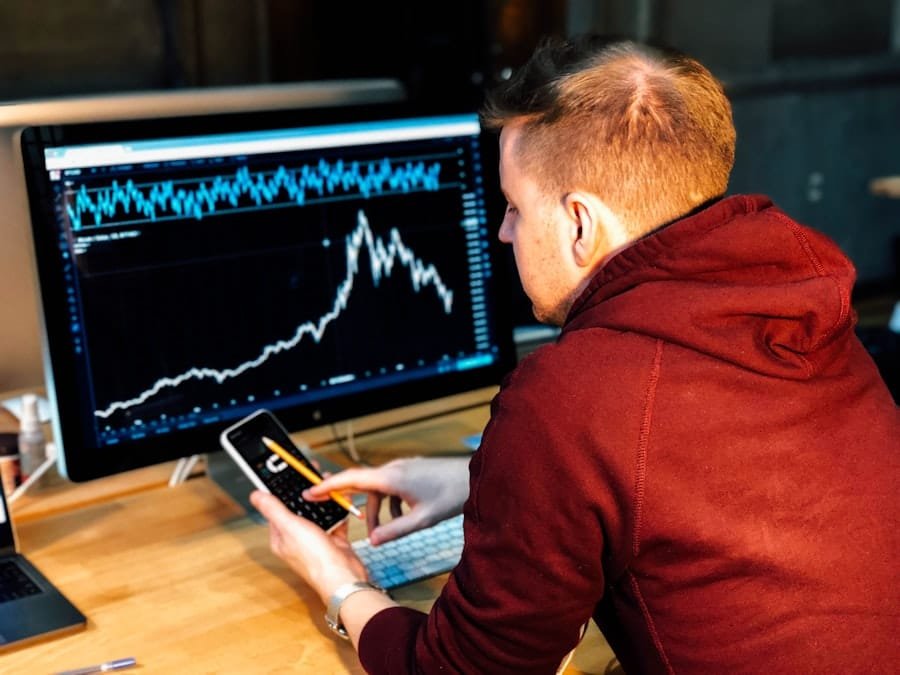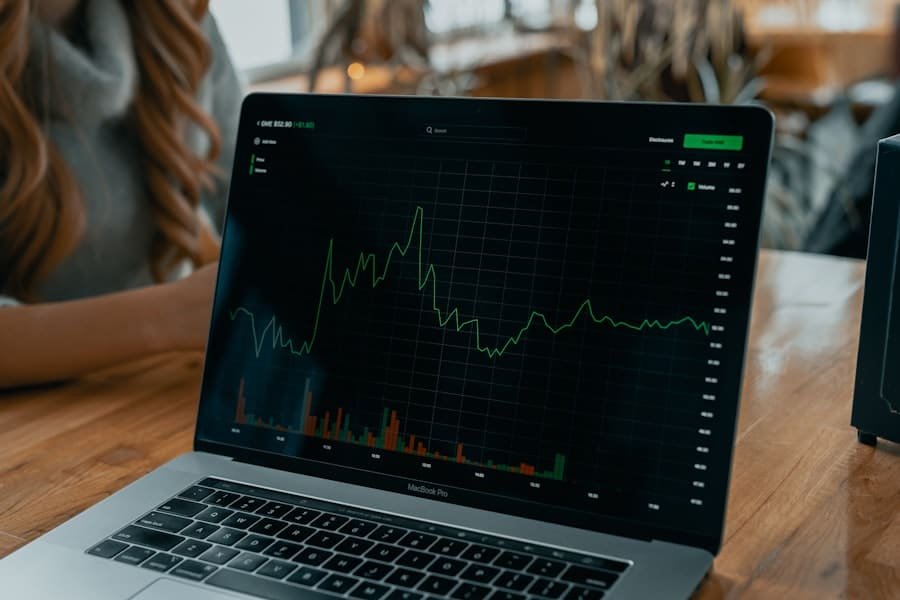The business cycle is a recurring pattern of economic fluctuations characterized by periods of growth and decline. It consists of four main phases: peak, contraction, trough, and expansion. The duration of each phase can vary depending on economic conditions.
Understanding the business cycle is essential for businesses, policymakers, and investors to anticipate and prepare for economic changes. Multiple factors influence the business cycle, including consumer spending, business investment, government policies, and international trade. During the peak phase, the economy reaches its highest point, with high employment, production, and spending levels.
This phase often experiences rising inflation and interest rates as demand exceeds supply. As the economy reaches its peak, businesses may overextend, leading to a slowdown in growth and the onset of the contraction phase. In the contraction phase, economic activity declines, resulting in decreased consumer spending, business investment, and overall economic output.
This can lead to increased unemployment and reduced income for individuals and businesses. The contraction phase can be challenging for businesses, often requiring difficult decisions to reduce costs and navigate the economic downturn.
Key Takeaways
- The business cycle refers to the natural fluctuation of economic activity over time, including periods of expansion and contraction.
- The peak phase of the business cycle is characterized by high levels of economic activity, such as high employment and production, and often leads to inflation.
- The contraction phase of the business cycle is marked by a decline in economic activity, including decreased consumer spending and business investment, leading to a rise in unemployment.
- The trough phase of the business cycle is the lowest point of economic activity, with high unemployment and low consumer confidence.
- The expansion phase of the business cycle is characterized by increasing economic activity, including rising consumer spending and business investment, leading to a decrease in unemployment and an increase in production.
- The recovery phase of the business cycle is the period of time when the economy begins to rebound from the trough, leading to increased consumer confidence and economic growth.
- Understanding the business cycle is important for policymakers and businesses to anticipate and prepare for economic fluctuations and their impact on the overall economy.
The Peak Phase of the Business Cycle
Building Inflationary Pressures
As demand outpaces supply, inflationary pressures start to build, leading to rising prices for goods and services. This can also lead to an increase in interest rates as central banks seek to control inflation by tightening monetary policy.
Risks of Overheating
The peak phase is often a time of optimism and confidence in the economy, with businesses and consumers enjoying high levels of income and spending. However, the peak phase also carries risks, as the economy becomes vulnerable to overheating. Businesses may become overextended as they try to meet the high demand for their products and services, leading to potential imbalances in the economy.
Preparing for the Contraction Phase
Rising inflation and interest rates can start to dampen consumer spending and business investment, signaling the beginning of the contraction phase. During the peak phase, businesses should be mindful of potential signs of overheating in the economy and be prepared to adjust their strategies as the business cycle transitions into the contraction phase.
The Contraction Phase of the Business Cycle

The contraction phase of the business cycle marks a period of economic slowdown and declining activity. This phase is characterized by a decrease in consumer spending, business investment, and overall economic output. As demand for goods and services starts to wane, businesses may start to experience declining sales and revenues, leading to potential layoffs and cost-cutting measures.
The contraction phase can be a challenging time for businesses as they navigate through a period of reduced economic activity and uncertainty. During the contraction phase, businesses may need to adjust their strategies to weather the economic downturn. This may involve cutting costs, reducing production levels, and finding ways to maintain profitability in a challenging economic environment.
Businesses may also need to focus on preserving cash flow and liquidity to ensure they can withstand the economic headwinds during this phase of the business cycle. Additionally, businesses should be mindful of potential opportunities that may arise during the contraction phase, such as acquiring distressed assets or investing in new technologies that can position them for future growth.
The Trough Phase of the Business Cycle
The trough phase of the business cycle represents the lowest point of economic activity before the economy starts to recover and enter the expansion phase. During this phase, businesses may experience low levels of consumer spending, high unemployment, and reduced business investment. The trough phase can be a challenging time for businesses as they navigate through a period of economic uncertainty and reduced demand for their products and services.
Businesses should focus on managing their resources effectively during the trough phase to ensure they can withstand the economic headwinds and position themselves for future growth. This may involve maintaining strong relationships with suppliers and customers, preserving cash flow, and investing in research and development to innovate and differentiate themselves from competitors. Additionally, businesses should be mindful of potential opportunities that may arise during the trough phase, such as acquiring distressed assets or investing in new markets that can position them for future growth when the economy starts to recover.
The Expansion Phase of the Business Cycle
The expansion phase of the business cycle marks a period of increasing economic activity and growth. This phase is characterized by rising consumer spending, expanding business investment, and overall improvement in economic output. As demand for goods and services starts to pick up, businesses may experience increasing sales and revenues, leading to potential opportunities for expansion and growth.
The expansion phase can be an exciting time for businesses as they navigate through a period of economic recovery and optimism. During the expansion phase, businesses should focus on capitalizing on the improving economic conditions to position themselves for future growth. This may involve investing in new technologies, expanding into new markets, and hiring additional employees to meet increasing demand for their products and services.
Businesses should also be mindful of potential risks that may arise during the expansion phase, such as rising inflation or interest rates that can impact their cost structure and profitability.
The Recovery Phase of the Business Cycle

Capitalizing on Economic Improvement
Businesses should focus on capitalizing on the improving economic conditions during the recovery phase to position themselves for future growth. This may involve investing in new technologies, expanding into new markets, and hiring additional employees to meet increasing demand for their products and services.
Managing Risks
Additionally, businesses should be mindful of potential risks that may arise during the recovery phase, such as rising inflation or interest rates that can impact their cost structure and profitability.
Strategic Planning
By taking a strategic approach to the recovery phase, businesses can set themselves up for long-term success and navigate the challenges that may arise during this period of economic improvement.
Understanding the Business Cycle and its Impact on the Economy
In conclusion, understanding the business cycle is crucial for businesses, policymakers, and investors as it helps them anticipate and prepare for the inevitable fluctuations in the economy. The business cycle consists of four main phases: peak, contraction, trough, and expansion. Each phase presents unique challenges and opportunities for businesses as they navigate through periods of economic growth and decline.
By understanding the dynamics of the business cycle, businesses can develop strategies to effectively manage their resources, capitalize on opportunities for growth, and position themselves for success in an ever-changing economic environment.
If you’re interested in learning more about the stages of the business cycle, you should check out the article “Understanding the Economic Cycle: A Comprehensive Guide” on The Econosphere. This article provides a detailed overview of the different phases of the business cycle and how they impact the economy. It’s a great resource for anyone looking to deepen their understanding of economic trends and fluctuations.
FAQs
What is the business cycle?
The business cycle refers to the natural fluctuation of economic activity that occurs over time. It is characterized by periods of expansion and contraction in the economy.
What are the stages of the business cycle?
The stages of the business cycle include expansion, peak, contraction, and trough. During the expansion phase, the economy grows, reaching a peak where economic activity is at its highest. This is followed by a contraction, leading to a trough where economic activity is at its lowest.
What happens during the peak of the business cycle?
During the peak of the business cycle, economic activity is at its highest. This is when employment is high, wages are rising, and consumer spending is strong. However, it also tends to be a period of inflation and potential overheating of the economy.
What occurs during the trough of the business cycle?
The trough of the business cycle is the lowest point of economic activity. This is when unemployment is high, consumer spending is low, and businesses are struggling. It is often a period of economic recession or depression.
How do businesses and policymakers respond to the business cycle?
Businesses and policymakers respond to the business cycle by adjusting their strategies and policies. During the expansion phase, businesses may invest in expansion and growth, while policymakers may implement measures to control inflation. During the contraction phase, businesses may cut costs and reduce investment, while policymakers may implement stimulus measures to boost the economy.








